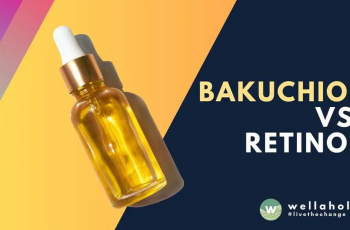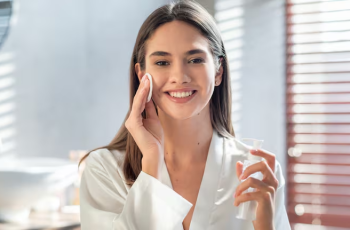
.webp)
.webp)
.webp)
Wrinkles are a natural and common part of the aging process. “As we age, the healthy elastin and collagen fibers in our skin naturally break down,” explains double-board certified facial plastic surgeon Dr. Jaimie DeRossa.
.webp)
.webp)
.webp)
She adds that environmental and lifestyle factors—sun exposure, pollution, smoking—can exacerbate this deterioration. Genetics also play a role in how and when fine lines and wrinkles develop.
.webp)
.webp)
.webp)
The truth is: No matter what a serum or treatment promises in practice, wrinkles are unlikely to ever be completely eliminated. However, there are ways to prevent and eliminate them. Learn more about the seven best ways to fight wrinkles—from tried-and-true ingredients to injectables—below.
.webp)
.webp)
.webp)
01 Use Sunscreen
.webp)
.webp)
.webp)
As the saying goes, the best offense is a good defense—and that applies to sunscreen and wrinkles, too. Sun exposure, especially UVA rays, is the primary cause of accelerated collagen and elastin breakdown, says Dr. DeRossa.
.webp)
.webp)
.webp)
UVA rays can penetrate clouds and even glass, so it’s important to use a broad-spectrum sunscreen of at least SPF 30, rain or shine, 365 days a year. Sure, it won’t help smooth out existing wrinkles, but it does prevent new ones from forming.
.webp)
.webp)
.webp)
02 Use Vitamin C Products
.webp)
.webp)
.webp)
Apply a vitamin C serum under your sunscreen to further combat wrinkles. This powerful antioxidant works in two ways: “It supports collagen production and reduces damage caused by photoaging and the sun’s UV rays,” explains Dr. DeRossa.
.webp)
.webp)
.webp)
(Not to mention, it helps reduce hyperpigmentation, too.) There are a number of different kinds of vitamin C available in over-the-counter skincare products, but L-ascorbic acid is the purest and most potent, which is what Dr. DeRossa looked for when choosing a topical product.
.webp)
.webp)
.webp)
03 Incorporate Retinoids into Your Routine
.webp)
.webp)
.webp)
Perhaps no class of active ingredients has been better studied and praised for its wrinkle-fighting benefits than retinoids. Retinoids are derivatives of vitamin A that stimulate collagen production and block the activation of enzymes that break down collagen,
.webp)
.webp)
.webp)
Dr. DeRossa says. Options range from over-the-counter retinol serums to prescription tretinoin. But no matter which you start with, your skin needs time to adjust to the active ingredients, Dr. DeRossa emphasizes.
.webp)
.webp)
.webp)
(Retinoids are known for their irritating side effects, such as peeling, dryness, and redness.) “While it takes a while to see results, using topical retinoids will produce long-term improvements to your skin, including the refinement of fine lines and wrinkles,” she says.
.webp)
.webp)
.webp)
04 Try a formula with added bakuchiol
.webp)
.webp)
.webp)
Retinoids are great, but as mentioned earlier, they can cause irritation. Also, they’re not recommended for use during pregnancy or breastfeeding. That’s where bakuchiol comes in, a plant-based retinol alternative.
.webp)
.webp)
.webp)
According to Dr. DeRossa, it affects the retinoid receptors in the skin and achieves the same effects as retinoids (including wrinkle reduction), but with fewer side effects. A 2019 study that directly compared bakuchiol and retinol found bakuchiol to be just as effective and less irritating. 1
.webp)
.webp)
.webp)
05 Consider neurotoxin injections
.webp)
.webp)
.webp)
Dr. Brauer highlights that neurotoxin injections are an option for treating dynamic wrinkles (wrinkles caused by repetitive muscle movement). There are multiple brands on the market—Botox, Dysport, Xeomin, and a few others—but they all contain botulinum toxin.
.webp)
.webp)
.webp)
Dr. Brauer explains that the toxin blocks the release of neurotransmitters necessary for muscle movement and temporarily weakens or paralyzes the muscle. Neurotoxin injections can also help smooth static wrinkles—wrinkles that form permanently due to repetitive muscle movement.
.webp)
.webp)
.webp)
Both experts we spoke to praised their good results. The only downside? But the results are not permanent, and according to Dr. Brauer, they take an average of three to four months. Therefore, regular follow-up treatments are needed to maintain the wrinkle-smoothing effects.
.webp)
.webp)
.webp)
06
.webp)
.webp)
.webp)
Try microneedling
.webp)
.webp)
.webp)
“Microneedling is a non-invasive procedure that punctures the skin with fine needles, causing microtrauma,” Dr. Brauer explains. The body’s natural healing response stimulates growth factors that ultimately lead to the synthesis of healthy collagen and elastin.
.webp)
.webp)
.webp)
“The skin looks younger, firmer, more toned and healthier,” he says. However, keep in mind that this is not a one-time treatment. The more you use it, the better the results will be, Dr. Brauer says. If you want to go a step further, you can also consider radiofrequency microneedling.
.webp)
.webp)
.webp)
Radiofrequency energy is delivered to the deep dermis layer of the skin, where it heats the tissue and further stimulates the production of new collagen. elastin and hyaluronic acid, Dr. DeRosa says.
.webp)
.webp)
.webp)
07 Learn about Fraxel treatments
Dr. Breuer says Fraxel is the first non-ablative and ablative laser treatment for skin remodeling. Non-ablative means that the deep dermis is heated to stimulate collagen production over the long term.
The ablative action works on the epidermis and activates the natural healing process, stimulating collagen production and reducing pigmentation, he explains. The treatment is ideal for treating both fine and deep static wrinkles.
The treatment is long-lasting, so it can be done yearly or less frequently depending on the condition of the skin.
FAQ
Which wrinkle treatment is the most effective?
From a topical skin care perspective, retinoids have the best, well-proven, and studied results. Neurotoxin injections are also very effective, but must be repeated to maintain results.
What are the newest ways to treat wrinkles?
Daxxify is a new neurotoxin injection that recently hit the market and is said to have effects that last longer than competitor Botox.
What is the best way to treat deep facial wrinkles?
Neurotoxin injections can help treat deep wrinkles, although Dr. Brauer also recommends injectable fillers. “They can be implanted either into the dermis or above the facial bones to add volume and reposition the facial skin.
This can reduce the appearance of fine lines and wrinkles and reduce skin sagging and volume loss,” he explains.

